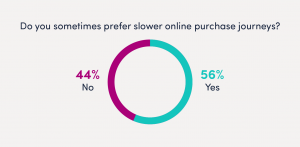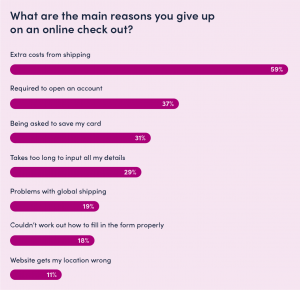By Matt Furneaux, Global Commercial Director, Loqate, a GBG solution
The pandemic forced many people to shop online, more than they ever had previously, and although lockdown measures have eased, plenty of people have continued the habit. 72% of consumers say they now have a greater reliance on online shopping, compared to before the pandemic. However, many retailers are understandably keen to discern whether this change is here to stay for good, or if it just represented a fleeting swarm of consumers buying bread makers and exercise equipment. Despite this shift, cart abandonment remains alarmingly high. On average, a customer abandons a cart six times a week because of poor UX.
Our most recent report – Future of the Digital Checkout – looked to answer these questions by surveying 4,500 people in the US, UK and across Europe to identify the trends that matter. We also asked the opinions of 150 ecommerce decision-makers to learn more about where the industry is heading, from the perspective of those in charge. The chief issues from the report are explained below.
More Haste, Less Speed Needed at The Checkout
The common consensus is that online checkouts need to be optimised for speed and that the best way to drive conversions is to get them in and out as fast as possible. However, as with the aforementioned exercise equipment, going fast can do more harm than good. 56% of people want a slower purchase journey when shopping online rather than skipping ahead to the purchase. The reasons for this desired slowdown also painted a clearer picture of why people aren’t always looking for the fastest journey.
54% of people say they want a slower journey to give themselves longer to reflect on their purchase, with 34% wanting to be confident that they have bought the right thing. Furthermore, 78% of people want the slower journey, because they like to mirror how they shop in-store when buying products online. This isn’t to say that customer necessarily miss the idea of queuing or combing through bargain bins, but both findings do show how in-store and online experiences can be part of the same journey, without competing with one another.

Trust is also a huge factor for consumers looking for slower journeys. 60% of people lose trust in websites when they are rushed to a payment, so it pays for retailers to slow down certain journeys if they’re hoping that their customers will become more than passers-by. But while acknowledging that a slower journey can be beneficial, what will truly set the top retailers apart is how they interpret the brief to make some journeys slower.
The fickle nature of consumers
Customers earned over a lifetime, can be lost forever in an instant. This may sound like a corny LinkedIn adage, but our research shows that poor UX can be dissuasion enough to put a customer off your brand for good. 44% of people will not return to a retailer with a negative checkout experience. Nearly a third (31%) of consumers express surprise at how poor some checkouts are, so there is considerable scope for plenty of otherwise willing customers to turn their backs on businesses forever.
However, there is a reward for striking the right balance, as 44% of consumers are loyal to brands that make it easier to buy their products. For these reasons, checkout UX needs to be seen as much more than a means of squeezing every last penny out of the consumer, but instead, as an aspect of the overall experience that keeps customers coming back for more.

What lies ahead
Looking to the future, smart home ordering is the innovation customers want to see most at the checkout. Although this flies in the face of slower purchase journeys, it makes sense when considering that consumers are aware of the different purchase journeys at hand. 33% of people want to see this feature as a mainstay of the checkout in years to come, meaning it would be beneficial for retailers to start weighing up which products would suit smart home ordering.
On-demand delivery is another vital feature that retailers should be looking to invest in, with 31% of consumers eagerly anticipating the idea of items being delivered to them, wherever they are on the same day. As people increasingly return to offices, having the ability to deliver to pick-up locations without a fixed address is a great feature and one that will give consumers better options at the checkout.
Another feature that consumers are keen to see at the checkout, is virtual reality. Some retailers, such as Ikea, have already started to incorporate VR into their offerings. It could give consumers a chance to preview products in their homes before making a purchase. Furthermore, 17% of consumers believe that drone deliveries will be a crucial feature moving forward, and if deployed correctly, this could certainly have a significant impact on delivery times.
In terms of putting these ideas into practice, over three-quarters of ecommerce decision-makers (80%) plan to invest in their online checkouts in the next year. The average spend for this investment is roughly $36,000, and for this reason, we eagerly await the changes that could revolutionise the checkout in the coming years.
Read the full report here.



